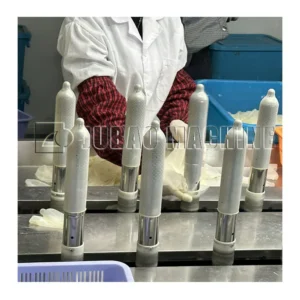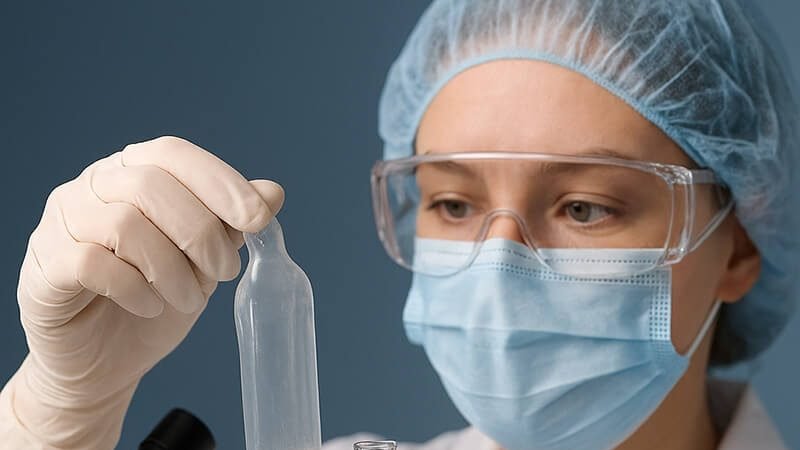How Do Condom Companies Test Their Products?
Table of Contents
- 1. Introduction
- 2. Regulatory Standards and Requirements
- 3. Manufacturing and Quality Control Testing
- 4. Laboratory Testing Methods
- 5. Electronic and Automated Testing
- 6. Clinical Trials and Real-World Testing
- 7. Batch Testing and Statistical Sampling
- 8. International Standards and Certifications
- 9. Continuous Improvement and Innovation
- 10. Conclusion
Introduction
Condoms are one of the most critical products in sexual health, serving as the primary barrier method for preventing both unwanted pregnancies and sexually transmitted infections (STIs). Given their vital role in public health, condom manufacturers must adhere to rigorous testing protocols to ensure their products meet the highest standards of safety, reliability, and effectiveness.
The testing process for condoms involves multiple stages, from raw material evaluation to final product certification. This comprehensive approach ensures that every condom reaching consumers has been thoroughly vetted for quality and performance. Understanding these testing procedures provides insight into the sophisticated science behind what might seem like a simple product.
Regulatory Standards and Requirements
Condom testing begins with adherence to strict regulatory frameworks established by health authorities worldwide. In the United States, the Food and Drug Administration (FDA) classifies condoms as Class II medical devices, requiring premarket notification and compliance with specific performance standards. Similarly, the European Union follows CE marking requirements, while other countries have their own regulatory bodies overseeing condom quality.
These regulatory standards define minimum requirements for tensile strength, burst pressure, leak resistance, and biocompatibility. Manufacturers must demonstrate compliance through extensive documentation and testing before their products can enter the market. The standards also specify testing methodologies, statistical sampling requirements, and acceptable failure rates for different test categories.
Manufacturing and Quality Control Testing
Raw Material Testing
The testing process begins before condom production even starts, with thorough evaluation of raw materials. Natural rubber latex, the primary material for most condoms, undergoes comprehensive chemical and physical analysis. Testing includes evaluation of protein content, which affects allergenic potential, as well as assessment of tensile strength, elongation properties, and aging characteristics of the raw latex.
For synthetic condoms made from materials like polyurethane or polyisoprene, manufacturers test for molecular weight distribution, chemical purity, and compatibility with lubricants and spermicides. Any additives, such as accelerators, stabilizers, or colorants, are also subject to rigorous safety and performance testing.

Production Line Testing
During the manufacturing process, condoms undergo continuous monitoring and testing at various production stages. The dipping process, where aluminum forms are coated with latex, is monitored for consistency in thickness and coverage. Automated systems measure film thickness at multiple points to ensure uniformity across the entire condom surface.
Temperature and humidity controls during the vulcanization process are constantly monitored, as these factors significantly affect the final product’s properties. Quality control technicians also perform visual inspections for defects such as air bubbles, thin spots, or contamination that could compromise product integrity.
Laboratory Testing Methods
Tensile Strength Testing
Tensile strength testing evaluates a condom’s ability to withstand stretching forces without breaking. Test specimens are cut from finished condoms and subjected to controlled stretching using specialized equipment. The testing measures both the force required to break the material and the maximum elongation before failure.
Leak Testing
Leak testing is perhaps the most critical evaluation, as it directly relates to a condom’s primary function. Two main methods are employed: the water leak test and the air burst test. In water leak testing, condoms are filled with 300ml of water and suspended for a specified time period. Any leakage indicates a defective product that must be rejected.
The air leak test involves inflating condoms with air to a specific pressure and monitoring for pressure loss over time. This test can detect microscopic holes that might not be visible during water testing. Both methods use statistical sampling, typically testing a predetermined number of units from each production batch.
Burst Pressure Testing
Burst pressure testing determines the maximum pressure a condom can withstand before failure. Condoms are inflated with air at a controlled rate until they burst, with the pressure and volume at failure point recorded. This test provides information about the material’s ultimate strength and helps establish safety margins for normal use.
Modern testing equipment can precisely control inflation rates and accurately measure burst pressures to within fractions of a kilopascal. The data collected helps manufacturers optimize material formulations and manufacturing processes to achieve consistent performance characteristics.
Aging and Shelf-Life Tests
Accelerated aging tests simulate the effects of long-term storage on condom properties. Samples are exposed to elevated temperatures and humidity levels for specified periods, then subjected to the same battery of tests as fresh products. This process helps establish shelf-life recommendations and storage requirements.
Real-time aging studies involve storing condoms under normal conditions for extended periods, typically several years, with periodic testing to monitor property changes over time. These studies validate accelerated aging results and provide confidence in shelf-life claims.
Electronic and Automated Testing
Modern condom manufacturing increasingly relies on automated testing systems that can evaluate products at production speed. Electronic leak detection systems use conductivity measurements to identify holes or thin spots in condoms as they move through the production line. These systems can test every unit produced, rather than relying solely on statistical sampling.
Optical inspection systems use high-resolution cameras and image processing software to detect visual defects such as particles, discoloration, or surface irregularities. Automated thickness measurement systems use laser or ultrasonic technology to ensure consistent wall thickness across the entire condom surface.
Clinical Trials and Real-World Testing
Beyond laboratory testing, condom manufacturers often conduct clinical trials to evaluate real-world performance. These studies involve volunteers who use the condoms under normal conditions while researchers monitor for breakage, slippage, and user satisfaction. Clinical trials provide valuable data on how laboratory test results translate to actual use scenarios.
Breakage and slippage rates are key metrics in clinical evaluations, with acceptable rates typically defined as less than 2% for breakage and less than 1% for complete slippage during use. These studies also gather feedback on user experience factors such as comfort, sensitivity, and ease of use.
Batch Testing and Statistical Sampling
Condom testing follows strict statistical sampling protocols to ensure representative evaluation of each production batch. International standards specify the number of units that must be tested based on batch size, with larger batches requiring proportionally more test samples. The sampling is designed to detect defective products with high confidence while maintaining economic viability.
Acceptance criteria are established based on statistical analysis, with predetermined acceptable quality levels (AQL) for different types of defects. If testing reveals defect rates exceeding these levels, entire batches may be rejected or subjected to additional testing and evaluation.
International Standards and Certifications
Condom testing follows internationally recognized standards such as ISO 4074, which specifies requirements and test methods for natural rubber latex condoms. This standard covers everything from raw material specifications to packaging and labeling requirements. Similar standards exist for synthetic condoms, ensuring global consistency in testing protocols.
Third-party certification bodies often conduct independent testing to verify compliance with these standards. Organizations such as the British Standards Institution (BSI) or Underwriters Laboratories (UL) provide certification services that give additional credibility to manufacturer test results.

Continuous Improvement and Innovation
Condom testing protocols continue to evolve with advances in technology and understanding of user needs. Manufacturers invest in research to develop new testing methods that better predict real-world performance. This includes studies on the effects of different lubricants, storage conditions, and usage patterns on condom integrity.
Innovation in testing also focuses on improving efficiency and accuracy. New automated systems can perform multiple tests simultaneously, reducing testing time while increasing the number of parameters evaluated. Advanced statistical analysis techniques help manufacturers identify patterns in test data that can guide product improvements.
Conclusion
The comprehensive testing protocols employed by condom manufacturers reflect the critical importance of these products in public health. From raw material evaluation through final product certification, every aspect of condom production is subject to rigorous quality control measures designed to ensure maximum safety and effectiveness.
Understanding these testing procedures provides consumers with confidence that the condoms they use have undergone extensive evaluation. The combination of laboratory testing, automated quality control, clinical trials, and regulatory oversight creates multiple layers of protection that help ensure product reliability. As technology continues to advance, condom testing methods will undoubtedly become even more sophisticated, further enhancing the safety and effectiveness of these vital health products.
The investment in comprehensive testing protocols by condom manufacturers demonstrates their commitment to public health and consumer safety. This rigorous approach to quality assurance helps maintain the high level of confidence that healthcare providers and consumers place in condoms as an effective method of protection against both pregnancy and sexually transmitted infections.
